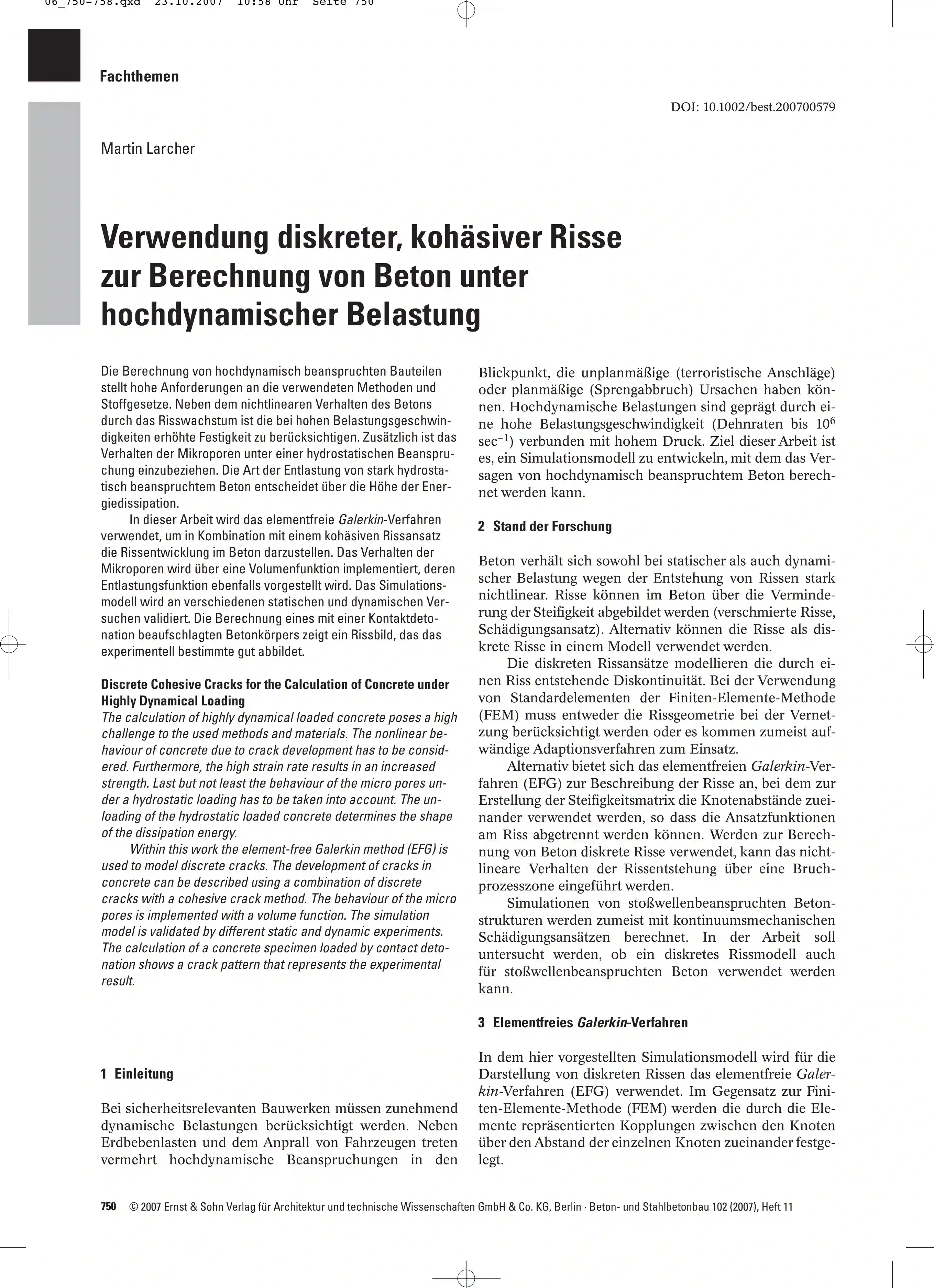
Scientific article
Material Properties
2007
- Abstract
- The calculation of highly dynamical loaded concrete poses a high challenge to the used methods and materials. The nonlinear behaviour of concrete due to crack development has to be considered. Furthermore, the high strain rate results in an increased strength. Last but not least the behaviour of the micro pores under a hydrostatic loading has to be taken into account. The unloading of the hydrostatic loaded concrete determines the shape of the dissipation energy.Within this work the element-free Galerkin method (EFG) is used to model discrete cracks. The development of cracks in concrete can be described using a combination of discrete cracks with a cohesive crack method. The behaviour of the micro pores is implemented with a volume function. The simulation model is validated by different static and dynamic experiments. The calculation of a concrete specimen loaded by contact detonation shows a crack pattern that represents the experimental result.
- Authors
- LARCHER Martin
- Year
- 2007
- Publisher
- Ernst & Sohn
- Citation
Beton und Stahlbetonbau no. 11 vol. 102 - Identifiers
JRC JRC37850 ISSN 0005-9900 DOI 10.1002/best.200700579
Documents are published in the JRC Publications Repository and are protected by copyright,with all rights reserved, unless otherwise indicated.
Additional information:https://ec.europa.eu/info/legal-notice_en#copyright-notice
Additional information:https://ec.europa.eu/info/legal-notice_en#copyright-notice
